Submitted by Berrin Chatzi Chousein
"I wanted particularly to provoke an artistic regeneration in the town" says OMM founder Erol Tabanca
Turkey Architecture News - Nov 16, 2019 - 13:41 9364 views

Kengo Kuma and Associates-designed Odunpazari Modern Museum (OMM) was opened to the public in September in Eskişehir, a university city in northwest Turkey. Commissioned and founded by architect and businessman Erol Tabanca, the museum is the first of its kind for Eskişehir.
The project, led by Yuki Ikeguchi, principle of Kengo Kuma and Associates, is comprised of a stack of wooden volumes, inspired by the surrounding streetscape of Odunpazari and its history as a timber trading market.
Standing as a new landmark that reconnects the town with its heritage, and as a progressive cultural development for Eskişehir, the museum is located at the threshold of newly developed urban area and small scale town scape of traditional Ottoman wooden houses.
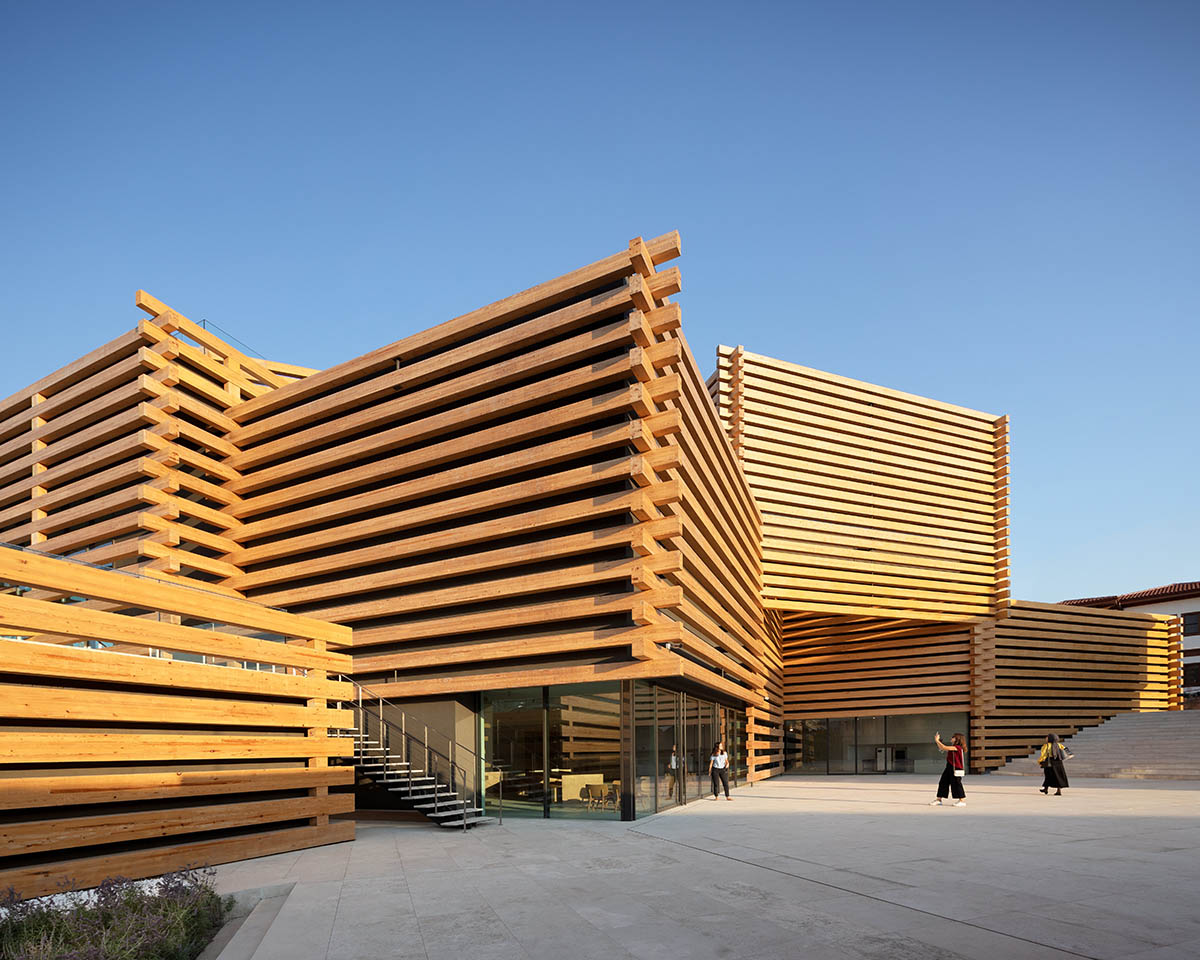
Image © NAARO
The 4,500-square-metre museum is not a classical museum and it emerges as a space for provocation of art for younger generation in the town, according to Erol Tabanca, founder of OMM and Chairperson of Polimeks Holding.
Since Eskişehir is the hometown of Tabanca, he chose his hometown to build the museum and wanted to open up his artworks to both national and international audience. But according to him, the museum should have gone beyond exhibiting a collection or an exhibition and turned into a more artistic and cultural space that local users and international visitors have also embraced.
Now starting from September, the museum is the home of the 1,000-piece collection of modern and contemporary art, owned by architect and businessman Erol Tabanca, and a vast range of exhibitions throughout its exhibition programme.
Split over three floors, the new museum has a variety of exhibition spaces that will house the permanent collection and host a programme of multidisciplinary exhibitions – many of which will be produced in collaboration with leading curators and creatives.
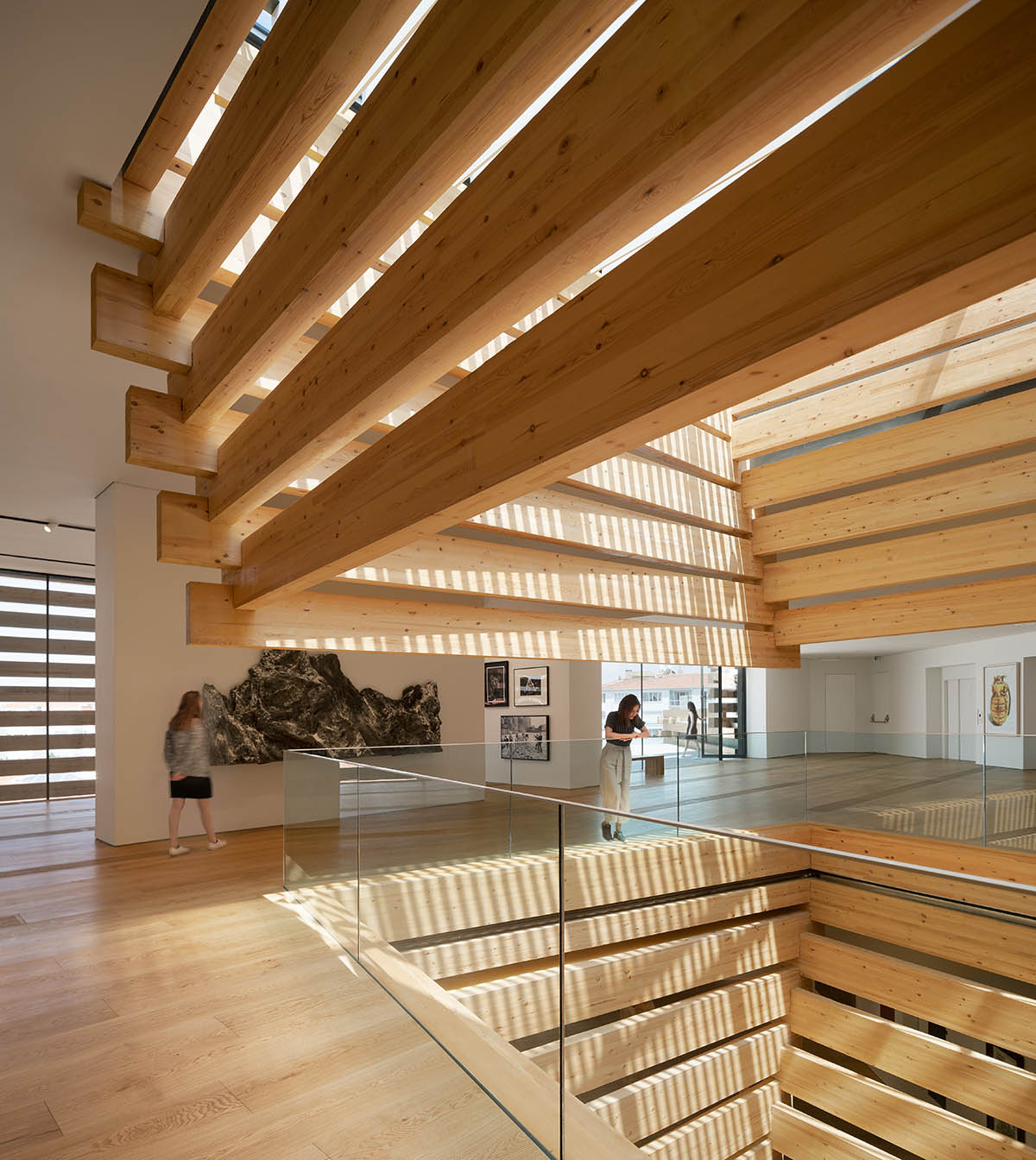
Image © NAARO
"I wanted particularly to provoke an artistic regeneration in the town"
Speaking exclusively to World Architecture Community in this interview, Tabanca said: "I began to develop the idea of OMM, a contemporary art museum with a strong focus on Turkish artists that would open up the collection to the public, and provide a much-needed cultural and artistic space in my home city of Eskişehir."
"I wanted particularly to provoke an artistic regeneration in the town, encouraging new visitors and giving local people the opportunity to discover contemporary art, both national and international," he added.
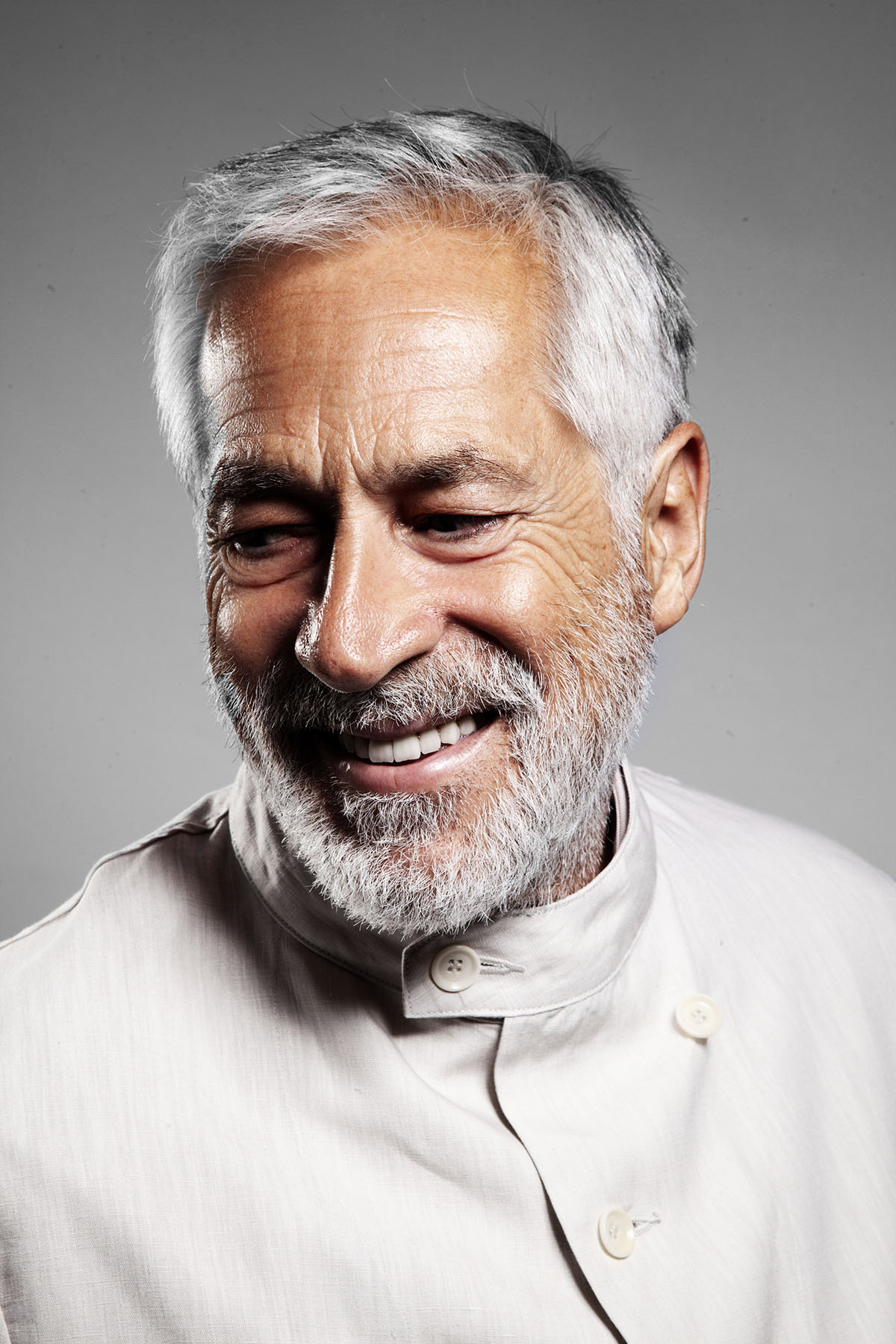
Erol Tabanca, founder of OMM and Chairperson of Polimeks Holding. Image © James Orlando
"OMM will create a legacy of the modern and contemporary art in Turkey and beyond"
Erol Tabanca, founder of Odunpazari Modern Museum and Chairperson of Polimeks Holding, has been expanding his art collection over fifteen years, and he has previously exhibited some works in the offices of Polimeks as part of Depo Polart. In addition to showcasing his art collection to the public, Tabanca explained how the idea of OMM came up and why he wanted to work with world renowned Japanese architect Kengo Kuma on the project.
"With my background in property development at Polimeks, and having studied architecture as a student, the design of OMM was profoundly important to me," Tabanca told World Architecture Community.
"I wanted a partner who shares our vision and who would bring a fresh approach to the project, and was struck by the work of Kengo Kuma and Associates."
"Their considered use of materials and their ambitions for harmony with buildings and local environment were both values that appealed to me and for the vision of OMM," he continued.
"OMM will create a legacy of the modern and contemporary art in Turkey and beyond, and will bring global attention to Eskişehir as a capital of culture," Tabanca added.
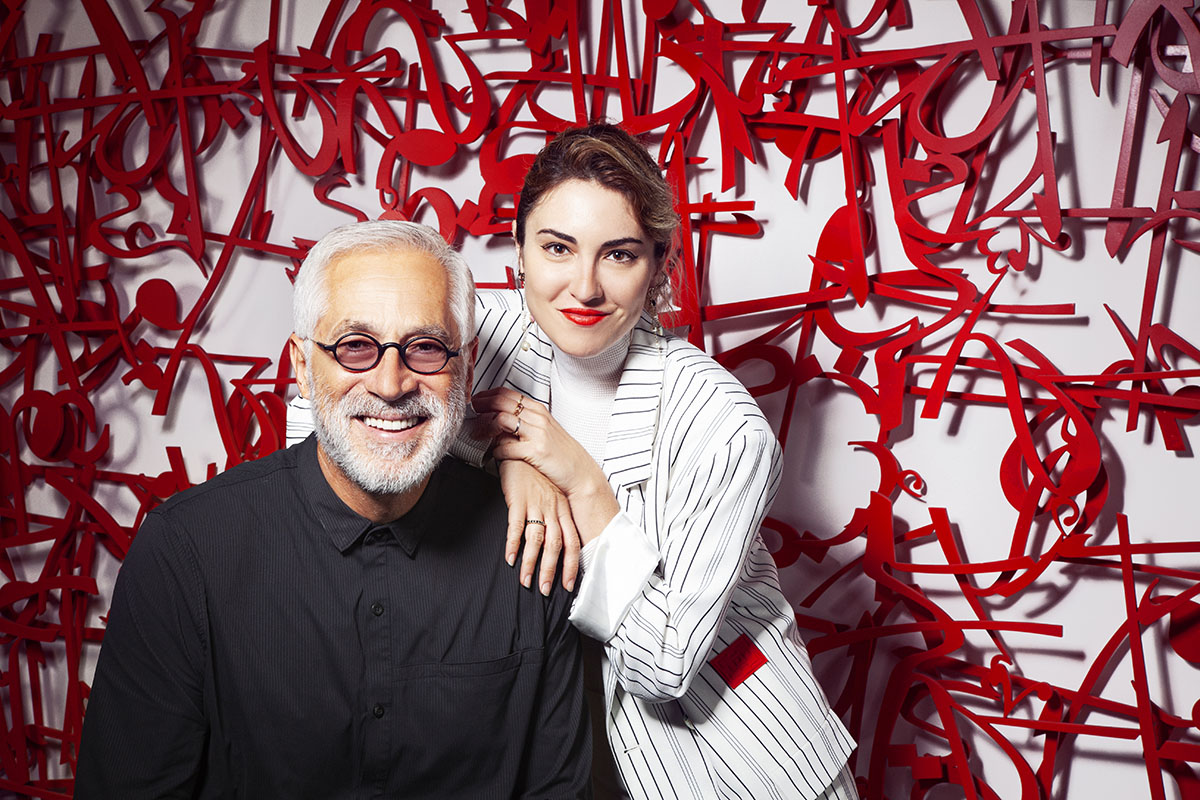
Erol Tabanca and İdil Tabanca, Creative Director and Chairperson of the Museum. Image © James Orlando
"I don’t see OMM as a traditional museum"
İdil Tabanca, daughter of Erol Tabanca and Chairperson and Creative Director of OMM, and is leading the programme of the museum for exhibitions and upcoming events where the community engagement and interactions of students are more involved in.
İdil Tabanca started her career in a film, then she studied digital media in the U.S. Her role then continued as editor-in-chief of BULLETT, a New York-based print and interactive “transmedia” company that curates bold, engaging fashion, art, film and music for young, international tastemakers.
In this exclusive interview with World Architecture Community, İdil Tabanca explained her role regarding the Odunpazari Modern Museum and talked about the mission and upcoming plans of the museum.
"I don’t see OMM as a traditional museum, and to that end we are presenting multidisciplinary exhibitions and a dynamic public programme to educate and inspire, stimulate cross-cultural dialogue and bring people together," said İdil Tabanca.
"The opening of OMM marks the beginning of a new era of collaboration and innovation in the university city of Eskişehir. We want OMM to be a modern, forward-looking institution, while respecting and engaging with its local surroundings."
"This mission is reflected in the architecture, but also in our upcoming plans for community engagement, interaction with the student body of the city, and the integration of OMM with other museums and cultural institutions in the city," she continued.
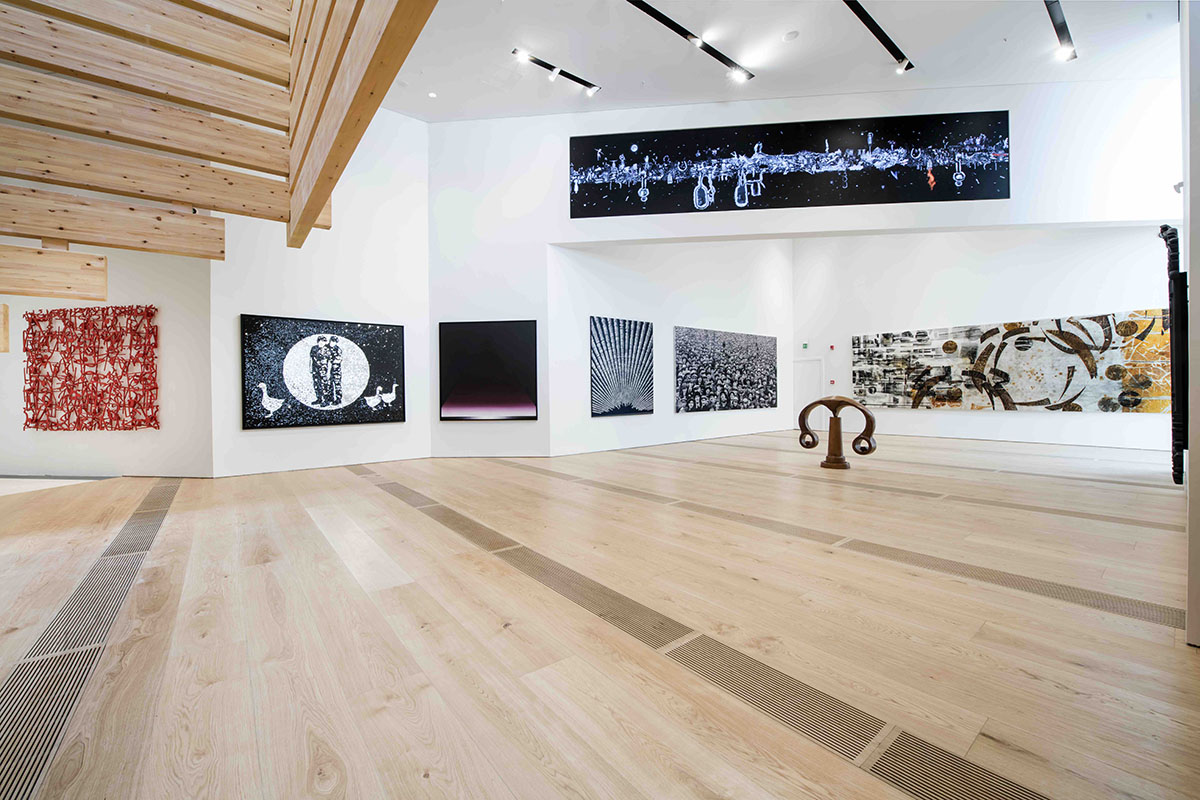
A view from The Union exhibition at Odunpazari Modern Museum. Image © Kayhan Kaygusuz
The inaugural exhibition of OMM was opened with "Vuslat" (translated as The Union), curated by Turkish curator Haldun Dostoğlu, founder of Galeri Nev Istanbul, which features a selection of over 100 works by 60 leading artists predominantly from Turkey including Bedri Rahmi Eyüboğlu, Canan Tolon, Erol Akyavaş, İlhan Koman, Ramazan Bayrakoğlu, Sinan Demirtaş and Tayfun Erdoğmuş.
The exhibition can still be viewed until January 1, 2010 at the museum. The exhibition of The Union was inspired by three scenes of union: Eskisehir gains its first private modern art museum; Erol Tabanca fulfills his dream of sharing his collection with the public, and the collection - much of which has been behind closed doors for years - is showcased in its entirety for the first time.
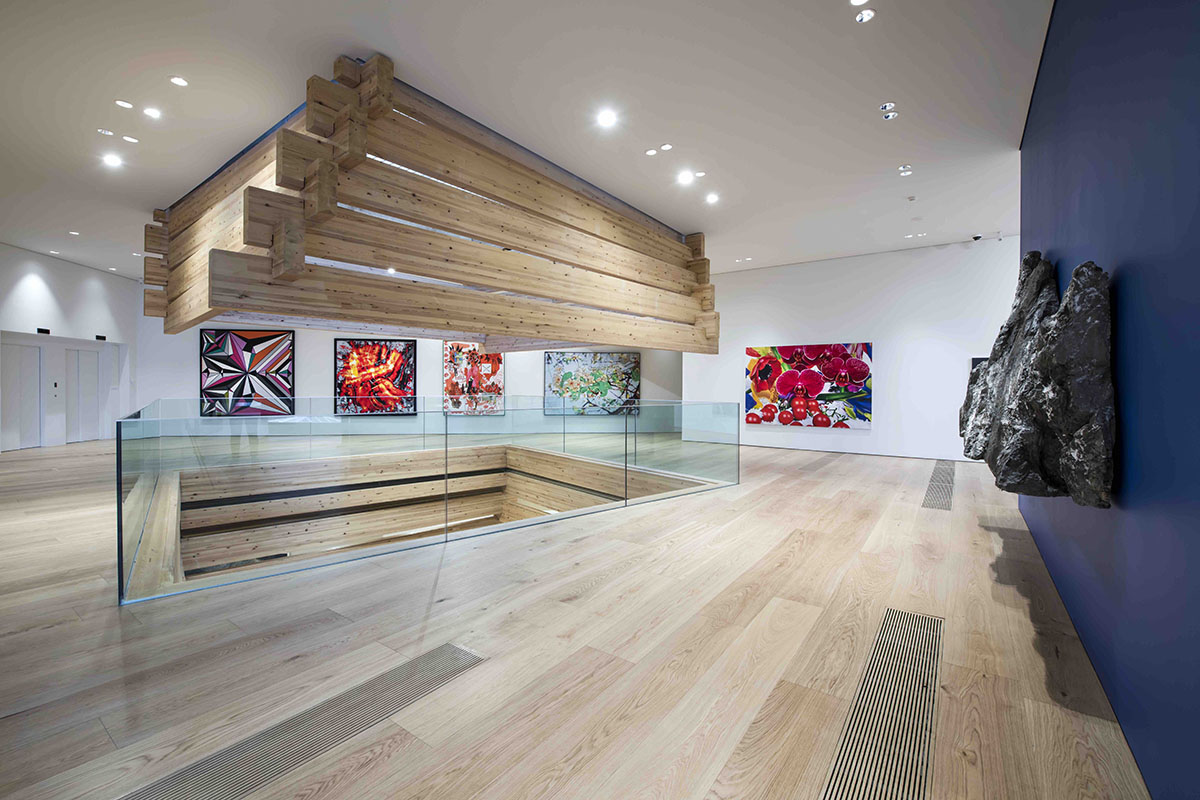
Opening exhibition of OMM. Image © Kayhan Kaygusuz
Regarding the content of the exhibition at OMM, Haldun Dostoğlu explained the exciting story behind this exhibition.
"When I took the responsibility of preparing OMM – Odunpazarı Modern Museum’s first exhibition, my first instinct was to look at the collection as a whole. I spent some time with the works of art. Like all large collections in the world, the Erol Tabanca collection had undergone various transformations over time, with the changing tastes providing opportunities for new quests, new searches," Dostoğlu told World Architecture Community.
"Like many collections elsewhere, the collection expanded over multiple narratives, rather than around a single backbone, gradually including more select works, of higher aesthetics, works of higher quality. The varied, pluralist and multicolored nature of artistic production was reflected in the collection’s composition as well."
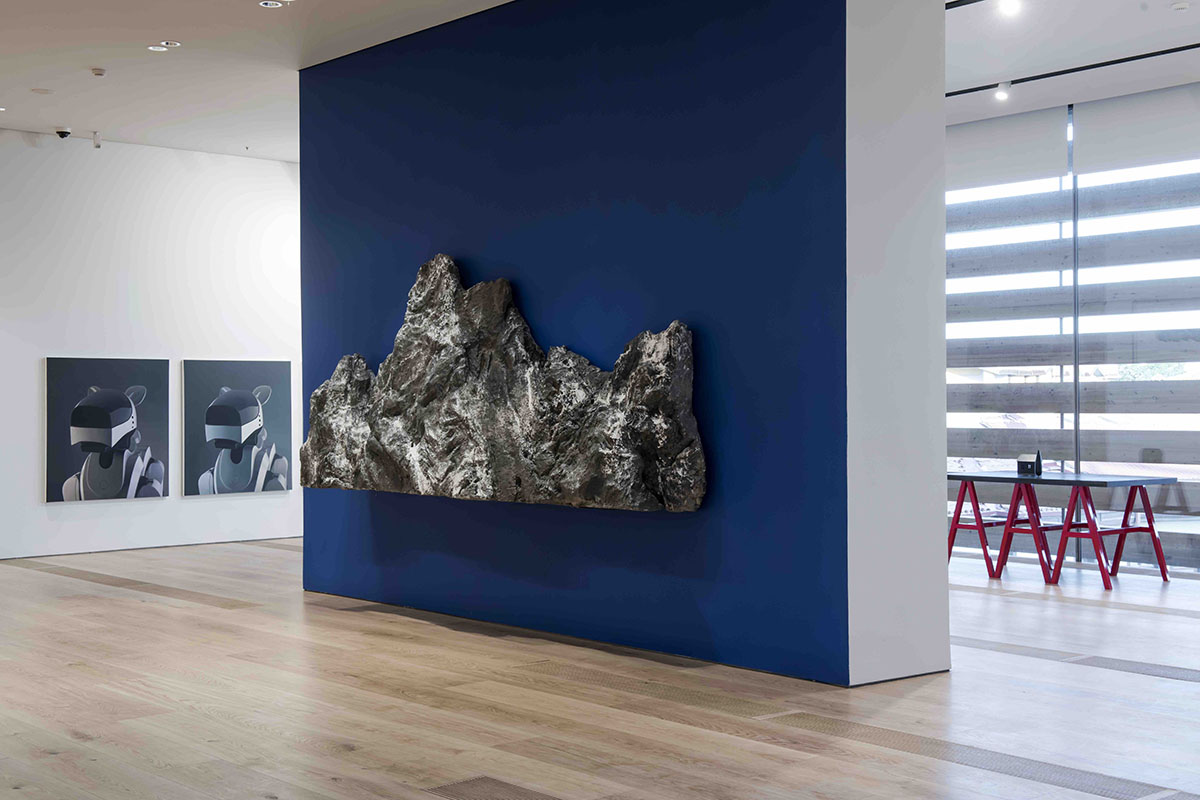
Opening exhibition of OMM. Image © Kayhan Kaygusuz
"Finding the answer to the question of which works selected from this collection should be in the museum’s first exhibition bears great significance with a correspondingly great responsibility. I am also aware of the necessity of not neglecting the passion to collect, which is almost as ancient as human history," Dostoğlu continued.
"During the preparation stage, I tried to consider a few things. A point high on my priority list was to never forget the fact that OMM was going to be the first modern art museum in Eskişehir."
"This city, perhaps the foremost among Anatolia’s progressive and radiant cities would have a modern art museum designed by an architectural group of international renown. It was important to keep this in mind."
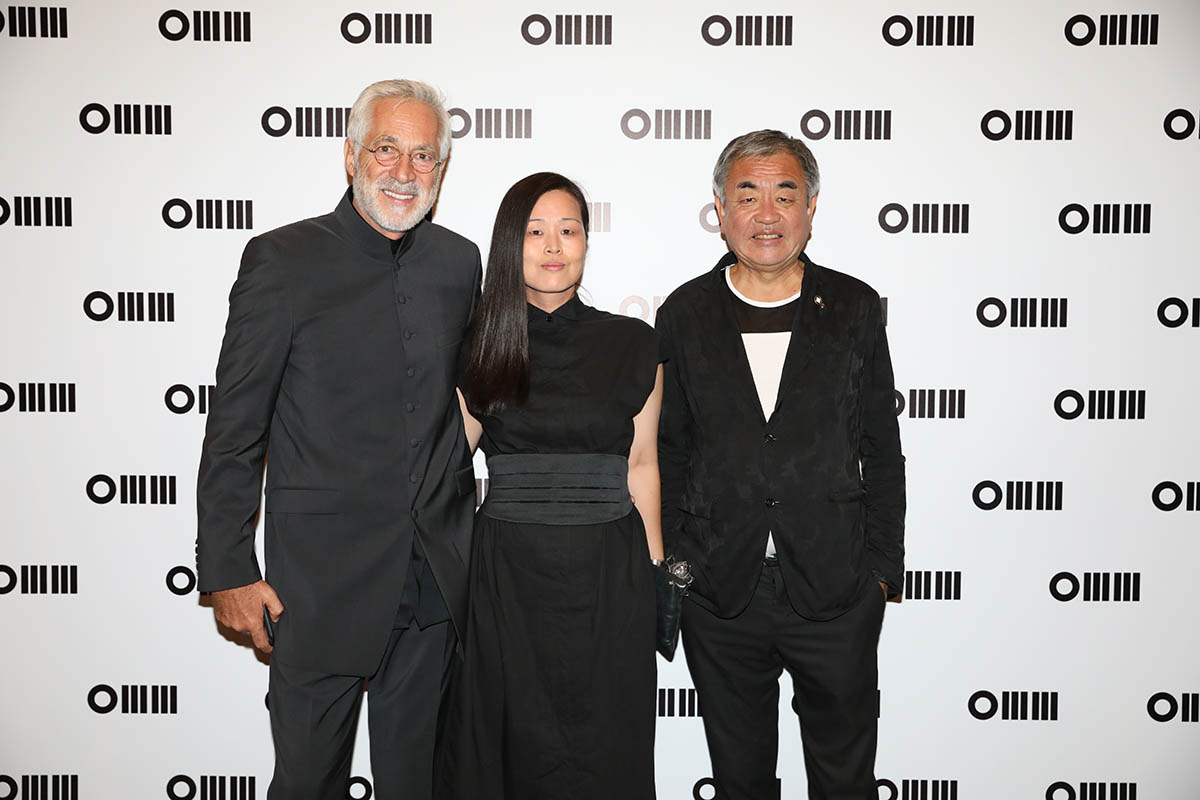
Erol Tabanca, Yuki Ikeguchi and Kengo Kuma at the opening ceremony. Image courtesy of OMM
"This three-fold union made it easier for me to come up with a name for the exhibition: "The Union. Eskişehir embraces its museum, the collector realizes his dream, and the works of art meet the visitors."
"The general nature of the collection as well as the exceptional architecture of the museum building guided me in forming the exhibition."
"I strived to achieve a harmony between the setup of the exhibition and the architecture through the distribution of the works among the floors and galleries, with the objective of ensuring the exhibition to be perceived as a single sentence while underlining the internal emphases in different scenes. I took great care to ensure that the meeting between the works of art and the visitors took place with joy," added Haldun Dostoğlu regarding the exhibition and the museum.
Scroll down to read the edited version of full interview with Erol Tabanca and İdil Tabanca below:
Erol Tabanca
Berrin Chatzi Chousein: Could you please tell us how did the new Odunpazari Modern Museum project come up?
Erol Tabanca: Over fifteen years of developing my art collection, I’ve become interested in sharing the experience of my artworks collectively, and to the Turkish public in particular. I began by exhibiting some works in the offices of Polimeks as part of Depo Polart, which was met with a warm reception, and encouraged me to share the works more widely.
I began to develop the idea of OMM, a contemporary art museum with a strong focus on Turkish artists that would open up the collection to the public, and provide a much-needed cultural and artistic space in my home city of Eskişehir. I wanted particularly to provoke an artistic regeneration in the town, encouraging new visitors and giving local people the opportunity to discover contemporary art, both national and international.
Berrin Chatzi Chousein: How did you decide to work with Kengo Kuma on this project? I mean what were the reasons for choosing Kengo Kuma in this project?
Erol Tabanca: With my background in property development at Polimeks, and having studied architecture as a student, the design of OMM was profoundly important to me. I wanted a partner who shares our vision and who would bring a fresh approach to the project, and was struck by the work of Kengo Kuma and Associates. Their considered use of materials and their ambitions for harmony with buildings and local environment were both values that appealed to me and for the vision of OMM.
Berrin Chatzi Chousein: We know that Eskişehir is your hometown and you wanted to build this museum in your city. But what were the other reasons to build this project in Eskişehir? Was there any message that you want to give the young generation and people with this project?
Erol Tabanca: Despite its size, Eskişehir has a reputation within Turkey as a capital of culture. It is home to 20 museums and three universities, but this youth and dynamism are rarely recognised outside of Anatolia. Kengo Kuma and Associates was mindful of OMM, being an enhancement of Eskişehir and its community, for both the local and student bodies. It is a great hope of mine that OMM will create a legacy of the modern and contemporary art in Turkey and beyond, and will bring global attention to Eskişehir as a capital of culture.
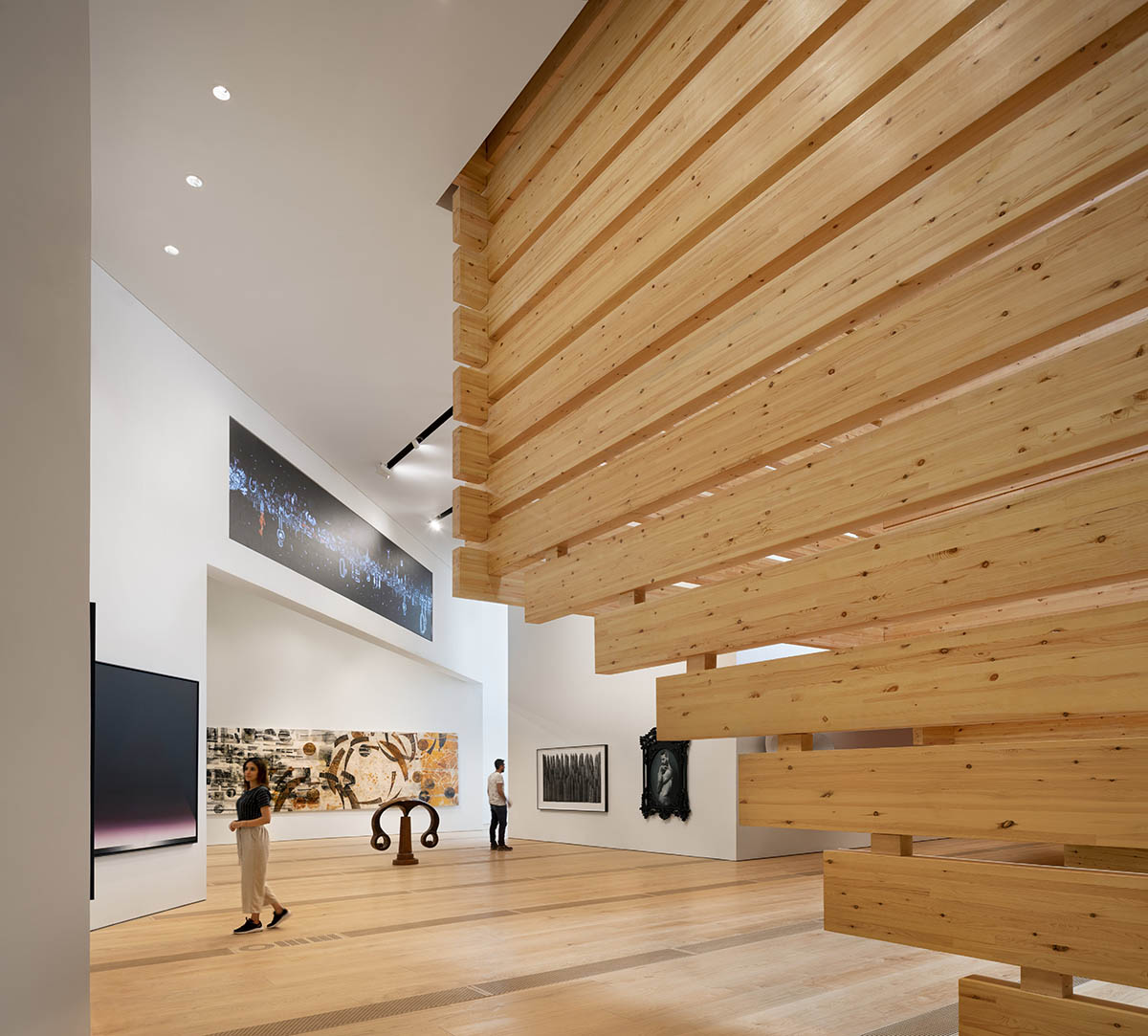
Image © NAARO
Berrin Chatzi Chousein: Are you planning to build extensions of the Odunpazari Modern Museum in different cities of Turkey?
Erol Tabanca: For now, OMM is a unique institution but I have always another projects in my mind, and we’re always looking for opportunities for collaboration and exchange.
Berrin Chatzi Chousein: Let’s talk about the museum itself. What exactly will visitors see in the museum apart from your permanent collection? Do you plan other exhibitions or events annually?
Erol Tabanca: The Tabanca collection will form the foundation of the museum, and will be rotated throughout the fluid exhibition spaces in line with the temporary exhibition programme. On top of these works the museum will host collaborations with contemporary artists that are specific to OMM; Tanabe Chikuunsai IV’s current installation, for example, takes inspiration from the bamboo of OMM’s structure, while the art collective Marshmallow Laser Feast, whose founder comes from Eskişehir, creating a series of virtual reality artworks to mark the opening of the museum.
Berrin Chatzi Chousein: Tell us about your permanent collection inside the museum. Whose works do you exhibit in your collection?
Erol Tabanca: My collection consists of works of both Turkish and international modern and contemporary art. Some artists are emerging names, while others are more well-established, including Burhan Doğançay, Marc Quinn, Sarah Morris and Erdağ Aksel. The collection continues to grow as we work with artists on commissions for OMM, and continues to support the creation of a sustainable environment for contemporary artists in Turkey.
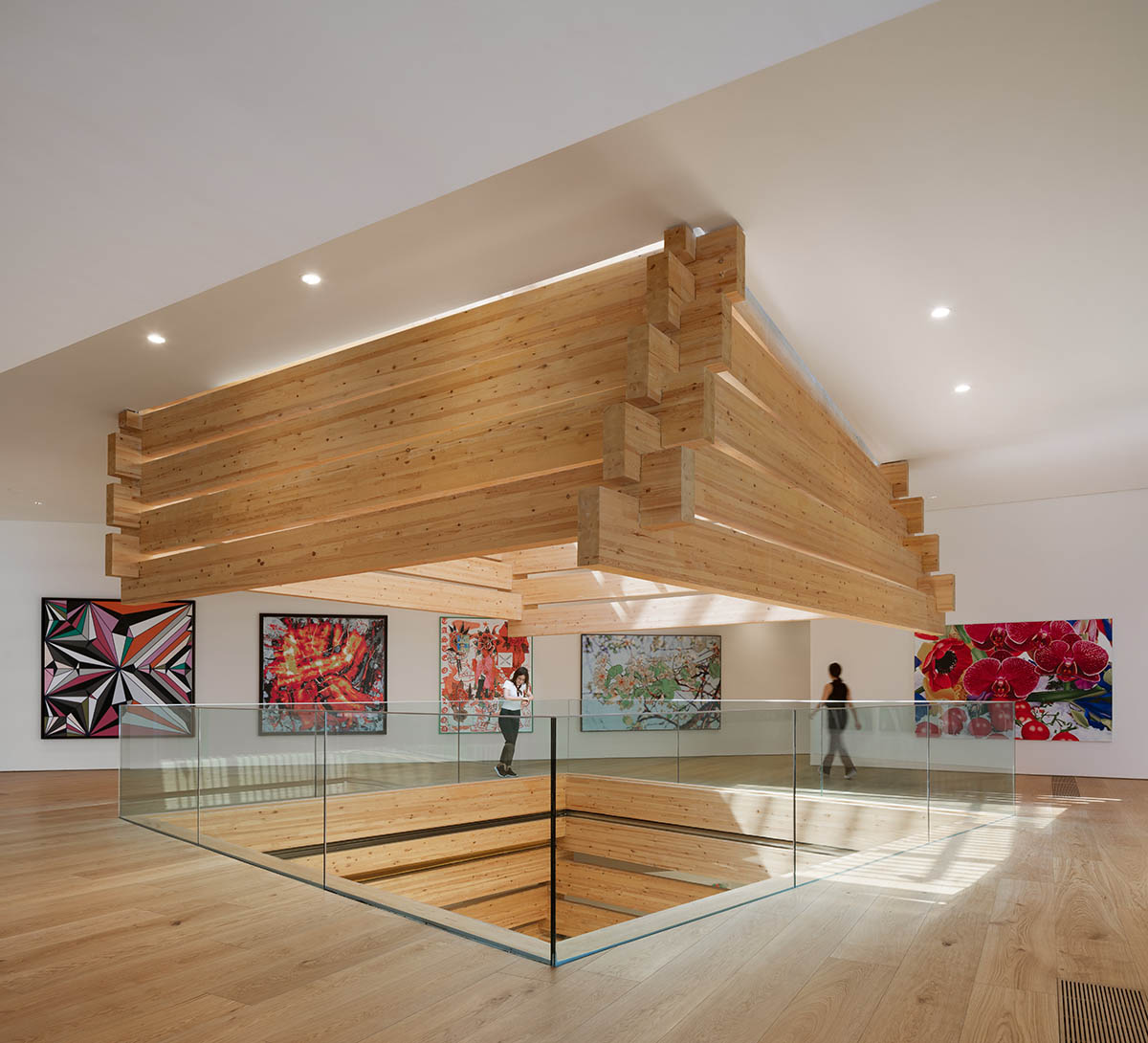
Image © NAARO
Berrin Chatzi Chousein: I want to learn about your position in the design process as a client and founder as well. We see that local materials are very strongly blended in other projects of Kuma. What were your thoughts when you first saw Kuma’s design proposal? How did you solve the use of such a dense wood material in the project?
Erol Tabanca: I was thrilled with the outcome of Kengo Kuma and Associates’ designs, led by managing partner Yuki Ikeguchi, and the building appears to have resonances internationally also. The architects considered their local surroundings thoughtfully and with care - the Odunpazari district is known for the cantilevered architecture of its houses, and its history as a wood market, both of which were reflected in the materials of the building, and mimicked in its layered design.
Berrin Chatzi Chousein: Was there anything you wanted to emphasize in the project brief that Mr. Kuma needs to follow? I’m talking about compelling elements, because it generally becomes the budget for most of the clients.
Erol Tabanca: The brief placed particular emphasis on designing a building with a strong connection to the local environment, alongside the need for an innovative design to showcase the collection in its best light. I wanted OMM to create a sense of spectacle through its architecture, though without dwarfing the dimensions and surroundings of the city.
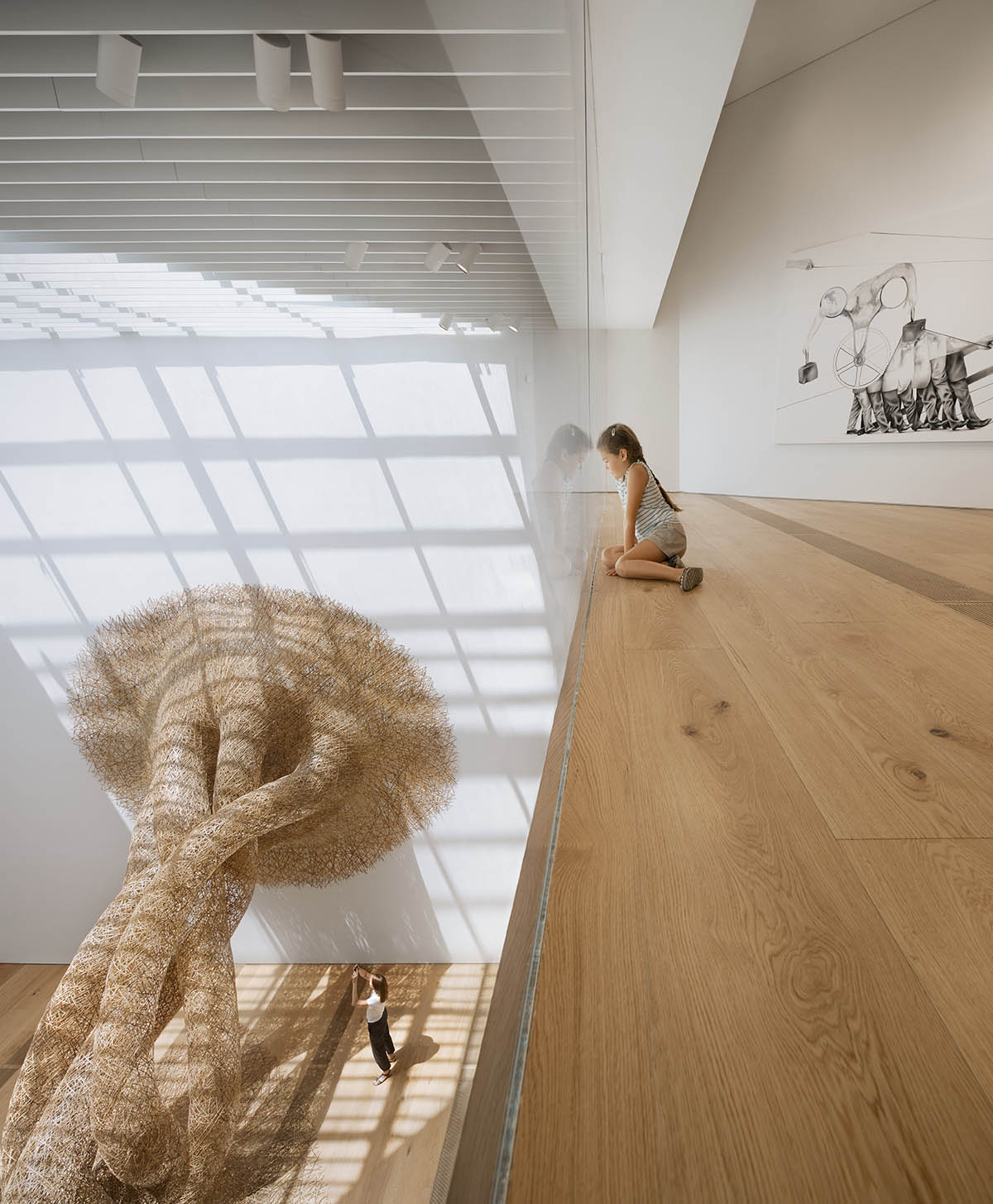
Japanese 'master' bamboo artist Tanabe Chikuunsai IV presents his ever largest installation, standing at over 6x8 metres. The installation will be on view until September 8, 2020. Image © NAARO
İdil Tabanca
Berrin Chatzi Chousein: Could you please tell us about your position at Odunpazari Modern Museum?
İdil Tabanca: My official title is Chairperson and Creative Director, and I’ll be leading OMM in its ambitions to establish a platform for artists of the future to make their voices heard. I don’t see OMM as a traditional museum, and to that end we are presenting multidisciplinary exhibitions and a dynamic public programme to educate and inspire, stimulate cross-cultural dialogue and bring people together.
Berrin Chatzi Chousein: Tell us about your background.
İdil Tabanca: I started my career in film, after studying digital media in the U.S. My role as Editor-in-Chief of BULLETT came out of meeting an amazing bunch of people in New York, and wanting to create something together. I had always wanted to work in production, and when I met the BULLETT team we ended up becoming publishers to put out all of the content we created. Several of the team have joined me to work on OMM and we’re bringing the same energy into producing a program that reflects our interests and instincts.
Berrin Chatzi Chousein: How did you involve in this project? Did you decide to work with Kengo Kuma together with Mr. Tabanca? Or did you directly suggest working with Kuma to Mr. Tabanca as a familiar person with museum architecture in the world?
İdil Tabanca: OMM is in some ways a family project - it is centred around my father’s art collection, which he wanted to share with the people of Eskişehir through establishing a museum. My father studied architecture as a student and for him Kengo Kuma and Associates was a natural choice of architect, as they work with natural materials, and their aim is to design architecture which naturally merges with its cultural and environmental surroundings.
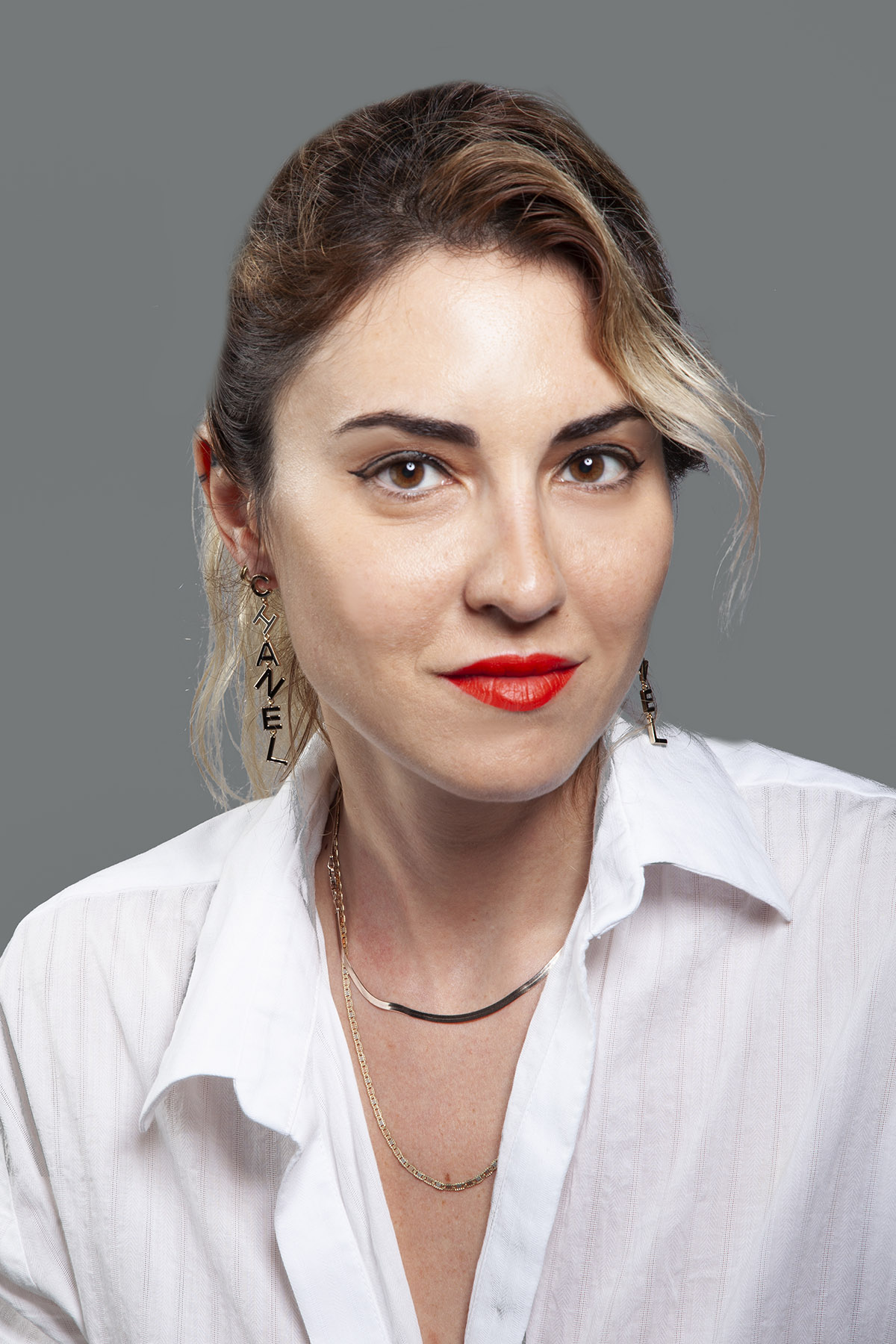
İdil Tabanca, Chairperson and Creative Director of OMM. Image © James Orlando
Berrin Chatzi Chousein: The 21st century museum architecture is designed as more dynamic, interactive and activity-based structures with different functions in recent years, rather than the buildings where classic collections are exhibited and visited at certain times. In this sense, what exactly is the mission of the Odunpazari Modern Museum? Can you tell us your thoughts about the new museum typologies and what exactly do you want to reflect in the Odunpazari Modern Museum?
İdil Tabanca: The opening of OMM marks the beginning of a new era of collaboration and innovation in the university city of Eskişehir. We want OMM to be a modern, forward-looking institution, while respecting and engaging with its local surroundings. This mission is reflected in the architecture, but also in our upcoming plans for community engagement, interaction with the student body of the city, and the integration of OMM with other museums and cultural institutions in the city. At the same time, we want to maintain a global outlook that does justice to the international nature of the collection, building on the collaborations we have already put in place with the Japanese artist Tanabe Chikuunsai IV and British art collective Marshmallow Laser Feast.
Berrin Chatzi Chousein: Could you please tell us about the first exhibition of the museum? And, what are your upcoming exhibitions or events for the museum? Do you have a more planned, activity-based strategies to involve younger generations to use the museum more often?
İdil Tabanca: The inaugural exhibition Vuslat (translated as The Union) was curated by Haldun Dostoğlu, the founder of Galeri Nev in Istanbul. It was important to us that the opening exhibition showcased primarily Turkish artists with international works. We plan to carry on inviting different curators, different perspectives, to engage with the collection as it grows.
(-end of transcript)
For this exclusive interview, WAC has tried to reach Kengo Kuma and Yuki Ikeguchi, but due to their busy schedule, they couldn't contribute to the interview.
Top image © NAARO
